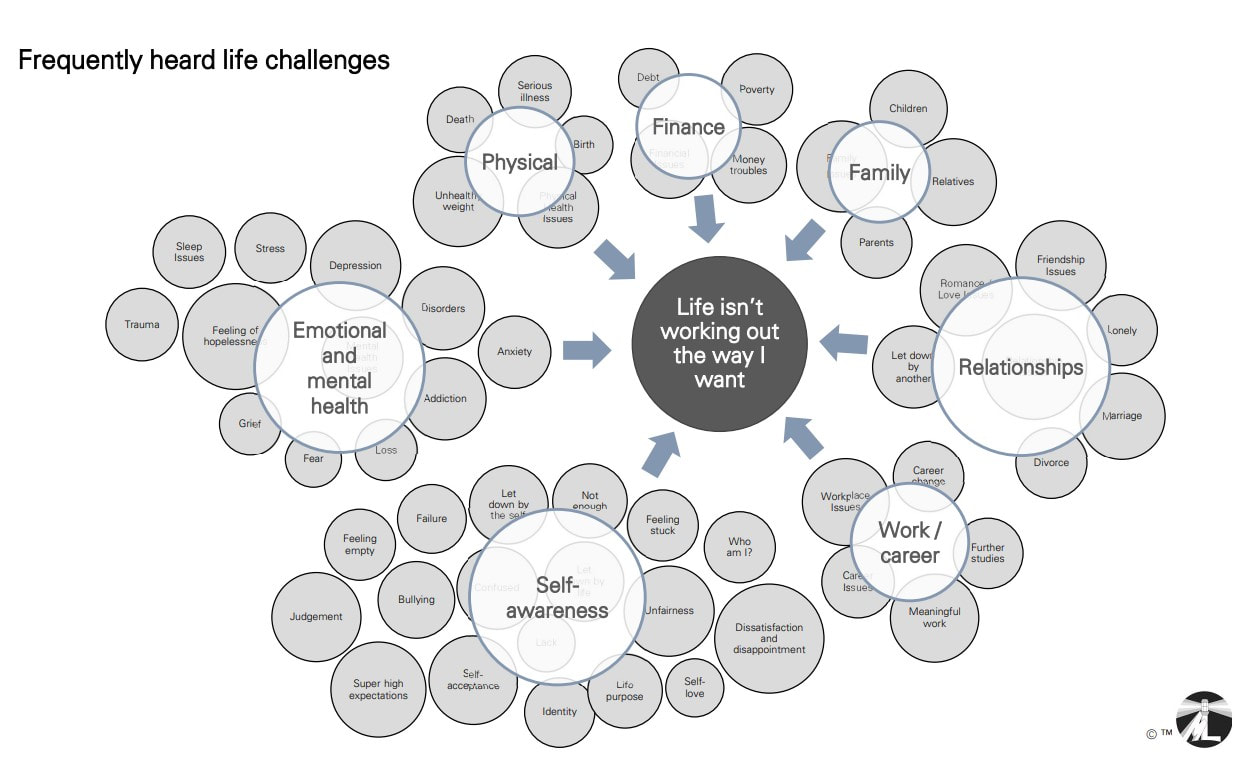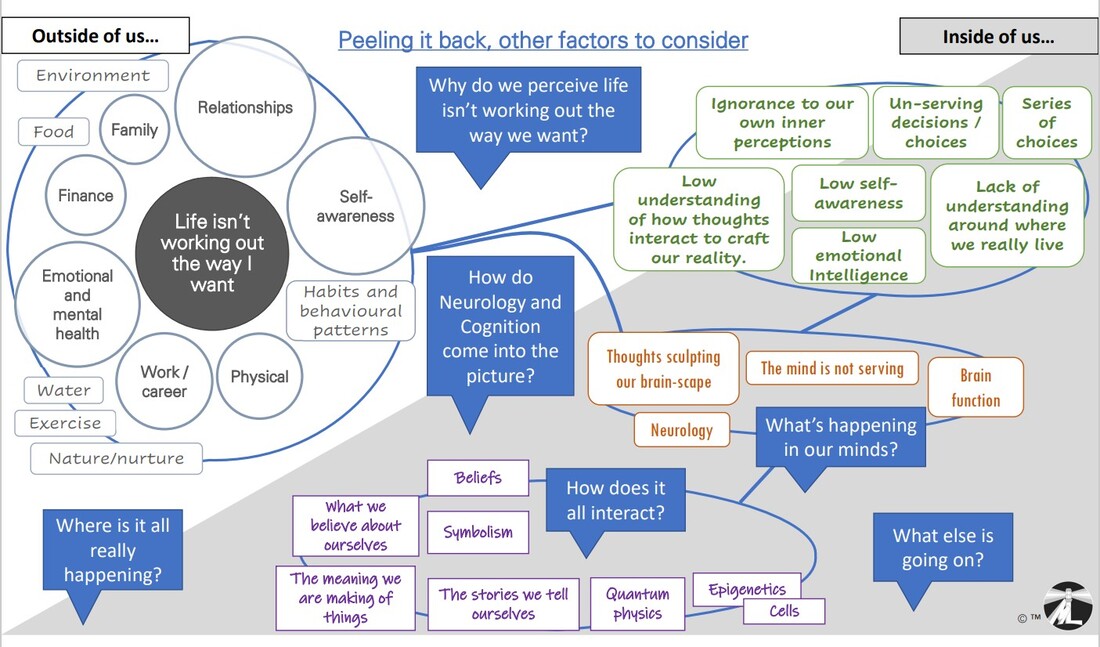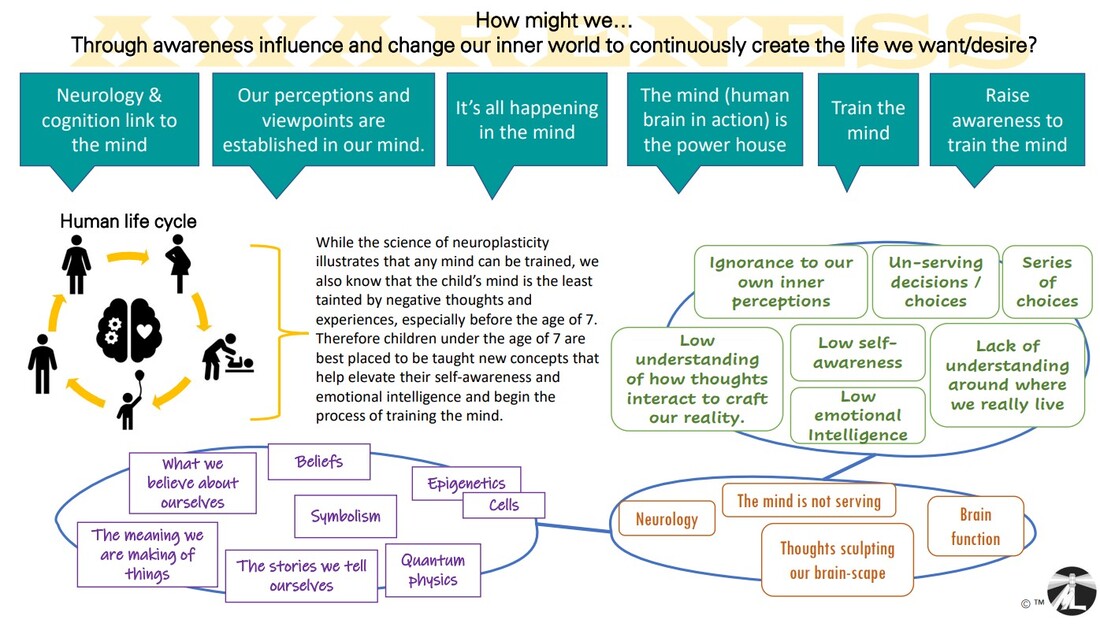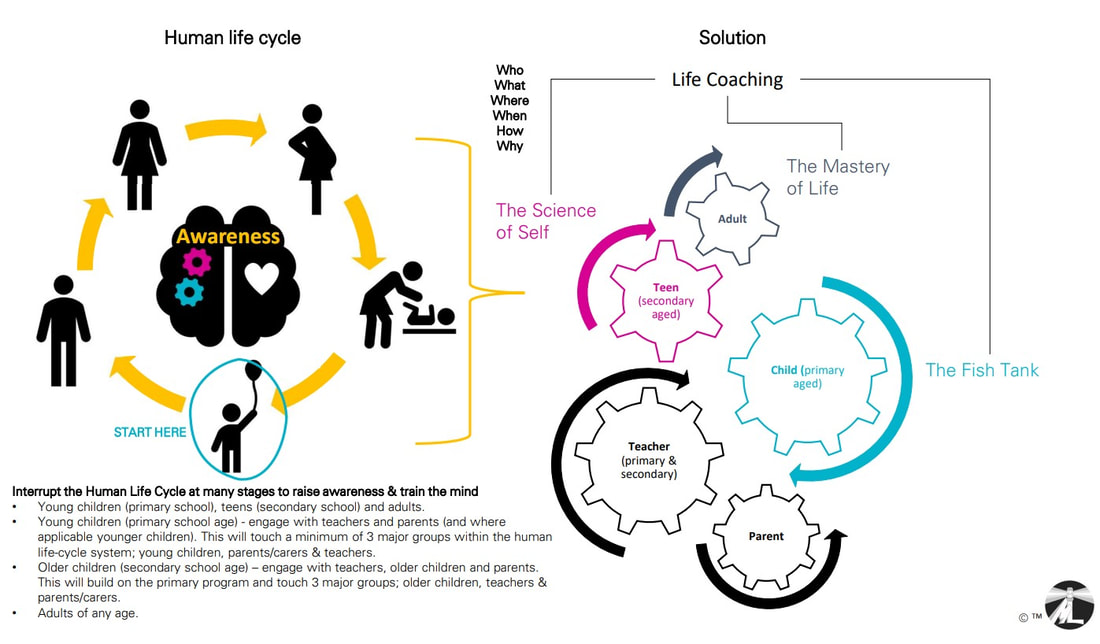Our approach - Design with a Difference
A primarily System-led Design (SLD) approach has been taken to design all our programs, also encompassed in the approach are the following methodologies (click on the links below to learn more):
- Human-Centred Design (HCD)
- Design Thinking
- Systems Thinking
- Iterative co-design (with teachers, parents, carers, primary and secondary aged children)
- Visual Thinking
- Behavioural Insights (BI) Thinking
- User Experience (UX) Design.
What an SLD approach is and why use it
What SLD is
- SLD is a purpose-driven approach to solving problems and responding to challenges in a system. It positions us to understand problems better and identify opportunities to interrupt a system (and/or systems) for long-term impactful change/s.
- It enables us to for first identify and see that everything is connected (make visible the smaller systems within the larger systems and their connections). It helps us to reveal the deep complexity within systems, to intimately explore and design solutions for that complexity.
- It encourages us to shift perspectives and viewpoints. By zooming out we gain greater perspective to explore and understand the larger more complex system as a whole. It positions us to see the processes at play and identify smaller systems within the larger system/s. It allows us to understand how and where they connect, influence and interact. We are then more informed to zoom in and explore potentially helpful ways to interrupt the system/s and create change.
- In short, we are better placed to understand problems that may exist beyond what is immediately observable, seek out positive points of influence to lean into and leverage points to design it differently.
Life Coaching intersects with SLD
In his role as a Life Coach, Jamie frequently came across stories of individual's challenges regarding families, relationships, work/career prospects, finances, physical, mental and emotional health, just to mention a few. Jamie was curious to explore these challenges further and to come up with a way to help more people help themselves with longer term optimal results. Renae, also with a desire to help people, saw this as a perfect opportunity to apply a primarily SLD approach. Together, they wanted to help people of all ages feel more empowered from within. Read more about Jamie and Renae.
Design with a Difference - steps taken
1. Understand the challenge/problem
Research was conducted over many years to develop a clear understanding of the problem, taking into account whether a person is being challenged by:
Understanding the challenge/problem:
"Life isn't working out the way I want, I'm not leading the life I truly desire". |
Agreeing on the purpose/intent:
"Through understanding and exploring the mind, we can help people to discover its extraordinary potential and provide tools and guidance, so that they may become empowered from within to guide themselves towards a greater life, a life they truly desire."
"Through understanding and exploring the mind, we can help people to discover its extraordinary potential and provide tools and guidance, so that they may become empowered from within to guide themselves towards a greater life, a life they truly desire."
2. Explore and understand the system
|
Once Jamie and Renae arrived at a joint understanding of the problem and their intent, they zoomed out to explore the system in which the problem exists. Seeking to understand connections and influences, they searched for where and how they would be best placed to interrupt the system in order to instigate the biggest and most impactful change - one that would be valid now and for generations to come, change that would have intergenerational impact.
|
Engaging in the following activities, they did a deep dive into the problem from a systemic perspective:
- desktop research (articles, medical reports, journals, and videos)
- listening to interviews and podcasts
- reading books
- interviews, focus groups and workshops many different people.
The following sciences and philosophies were explored and investigated to reach a deeper, cognitive and neurological understanding of how and what is happening.
|
Through their research and exploration of the system they saw things continually looping back to awareness: the common thread weaving through everything. This, therefore, was a significant consideration when moving into the next phase - the Design phase.
3. Design with a difference
|
Collaborating with a range of people likely to be interacting with Monument Learning products and services, Renae and Jamie cycled through the processes of generating and testing ideas, developing designed/co-designed solutions then testing and iterating on them further. One of their key questions being: How might we continuously create the life that we want/desire?
|
In Designing with a Difference, Jamie and Renae used empathy to explore how we might bring awareness to ourselves, to design our minds differently. A key insight being that the earlier in life we can do this, for example within the first 7 years, the bigger the impact.
4. experiment and refine
In this phase Jamie and Renae took some of the earlier designs and developed them into medium-high fidelity prototypes that were piloted and experience tested with teachers, parents and primary aged children. From here, both The Fish Tank in Homes and The Fish Tank Program (for primary school) were formed.
Aligned with uplifting personal and social capability (a component of the school curriculum), each year level of The Fish Tank Program (and programs thereafter) builds on the year before. Below is a list of prep (4/5 year old) items which due to be released in January 2023.
Aligned with uplifting personal and social capability (a component of the school curriculum), each year level of The Fish Tank Program (and programs thereafter) builds on the year before. Below is a list of prep (4/5 year old) items which due to be released in January 2023.
- A colourful and textural range of tactile learning fish (each representing their own emotion) to help engage with and understand emotions from a kinaesthetic level.
- Prep reader books to assist in identifying language to express emotion.
- Fridge magnets to assist in engaging in conversation around emotions.
- Fun and engaging meditations to help with mindfulness.
- "Lots of fun" card game to assist with emotional recognition and identification.
- Story books to assist in articulating how emotions and thoughts interact.
- Colouring and dot-to-dot activity sheets to help with creativity, imagination and mindfulness.
- In-class and at home activities.
|
The Fish Tank Program segues into secondary school where the students begin engaging with The Science of Self (a science-based program that guides students towards an enhanced understanding of themselves as a chemical construct). Once a person reaches adulthood they are opened up to the opportunity to engage with The Mastery of Life (an enhanced training program that explores the connections between quantum physics and Neuro Linguistic Processing), which much of Monument Learning's coaching approaches are linked to and based on.
|
Monument Learning helping in education and homesMonument Learning is enthusiastic to work with families who want to implement changes in support of uplifting their children's emotional intelligence, and self-awareness.
Contact us if you to discuss implementing The Fish Tank program into your school or early learning centre, would like to bring The Fish Tank into your home, or if you are simply curious to learn more. |






